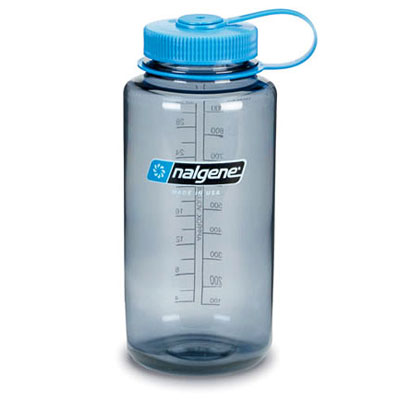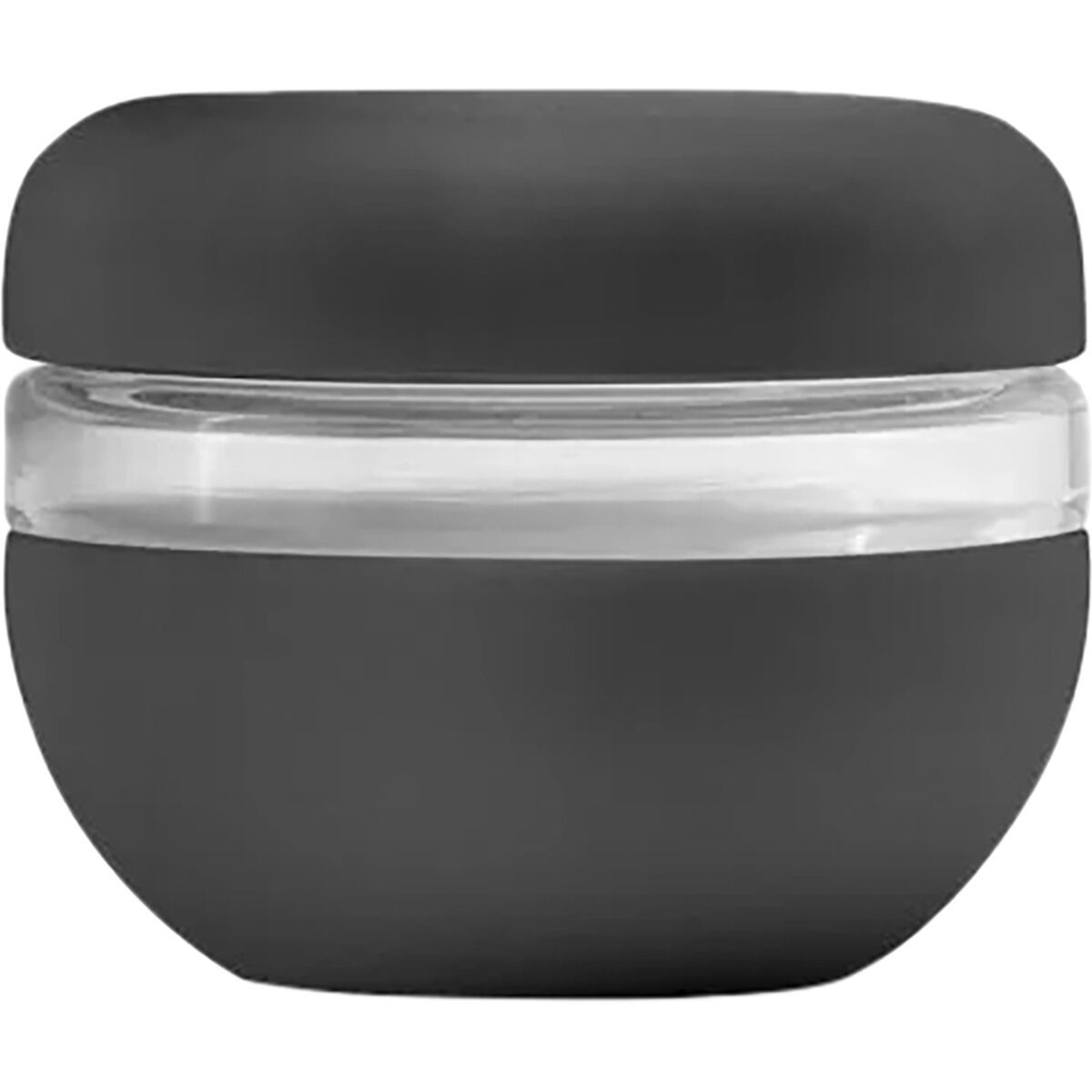Nalgene Polycarbonate (Lexan)

- *discontinued
- nearly indestructible
- bpa leaching concerns
- 5.4 ounces
Despite their once-great popularity, Nalgene's Lexan water bottles are now all but extinct, phased out of production due to chemical leaching concerns.
The irony, of course, is that crisp, clear Lexan (polycarbonate-acrylic) was sold to us as a safer alternative to the old, milky-colored, smelly HDPE (high-density polyethylene) plastic water bottles. Unlike HDPE, Lexan™ bottles add little to no scent or taste to water or other beverages, making them attractive to hikers tired of drinking water that smelled and tasted like decomposing plastic.
Lexan/Polycarbonate bottles also brought the added advantage of fantastic strength—they're nearly unbreakable. With these formidable attributes, Nalgene's Lexan bottles swept the market, replacing HDPE bottles by the truckload. As is usually the case when something sounds too good to be true, however, concerns soon surfaced regarding the chemical BPA (Bisphenol A), which acts like a synthetic hormone, leaching into your drinking water.
Do we have a definitive answer, as of May 2012, as to the real danger posed by Lexan water bottles? Oddly enough, no. Considerable evidence seems to suggest that BPA-containing plastics should be avoided. But the EPA is still studying the matter and resisting calls for outright bans. In any case, as far as Naglene Lexan containers are concerned, the point is moot. Nalgene has phased out production of Lexan bottles in favor of a newer plastic called Tritan. Tritan is BPA-free, though it's also quite new and therefore without an established safety record.
Should you throw away old Lexan water bottles? I'd say yes. This seems to be a case where a little paranoia isn't going to hurt you, and might just help. Available research strongly suggests that BPA leaches into water from Lexan bottles. As 21st Century humans we're exposed to a lot of chemicals, BPA included, from other sources. It would seem prudent at least to minimize unnecessary exposures.
For your backcountry and hiking needs, you should strongly consider reverting to the original Nalgene bottle, made of HDPE. These are significantly lighter than both Lexan and Tritan bottles, and, when new at least, add perhaps less of a plastic smell to water than you might remember. Those most sensitive to possible chemical exposure should also consider stainless steel bottles—though of course they are heaviest when backpacking.

W&P Tritan Seal Tight Lightweight
$20.00 at Backcountry.com
evo 32oz Wide Mouth Sustain Nalgene
$17.95 at evo
evo 32oz Wide Mouth Sustain Nalgene
$17.95 at evo
Nalgene Wide Mouth 32OZ Insulated
$19.54 at OMCgear
Nalgene Wide Mouth 48oz Silo
$16.99 at OMCgearNalgene Sustain Wide-Mouth Silo
$20.00 at REI.com

 Steripen Freedom
Steripen Freedom SteriPen Adventurer
SteriPen Adventurer Nalgene Tritan
Nalgene Tritan MSR Hyperflow Microfilter
MSR Hyperflow Microfilter Nalgene HDPE
Nalgene HDPE Katadyn Hiker Microfilter
Katadyn Hiker Microfilter Klean Kanteen
Klean Kanteen